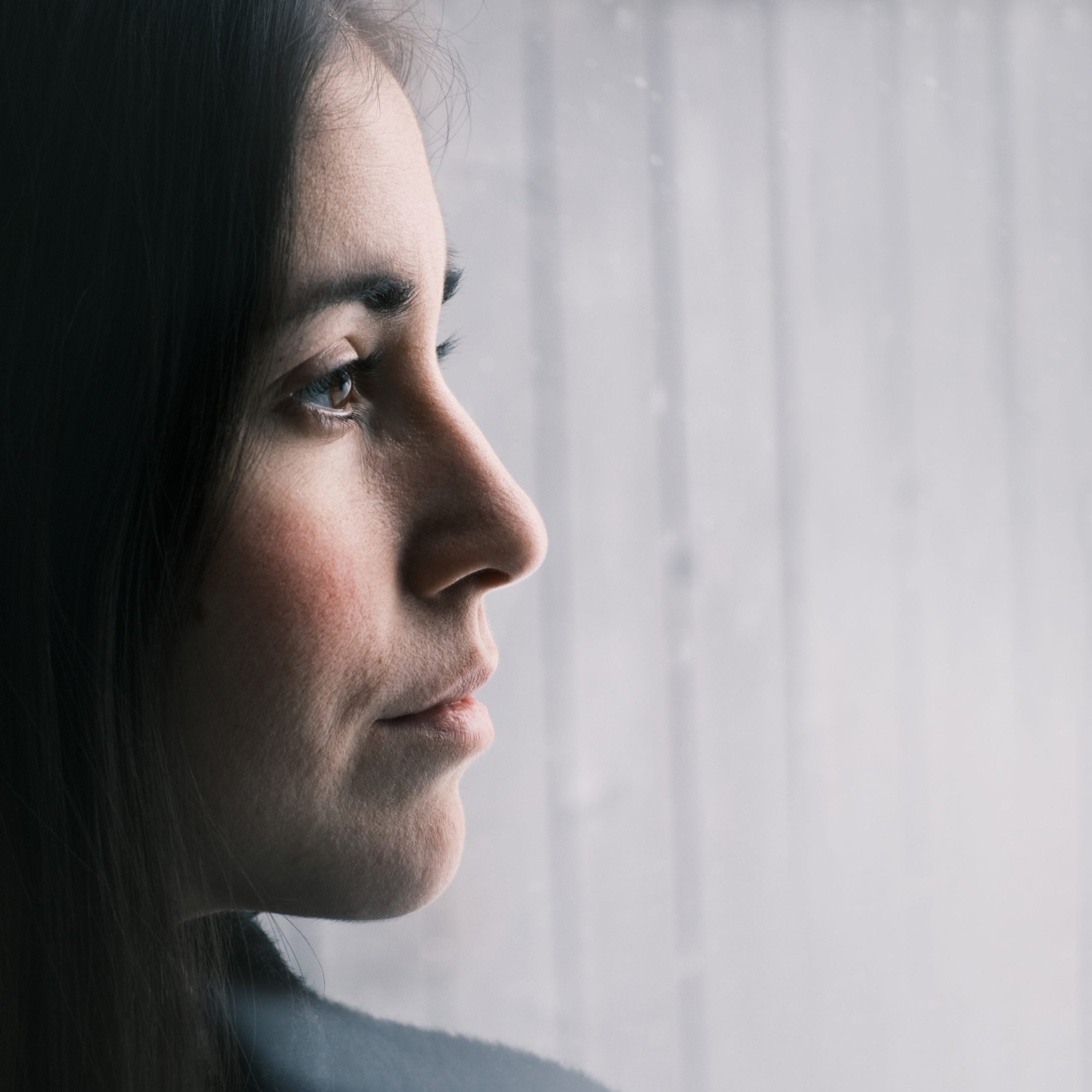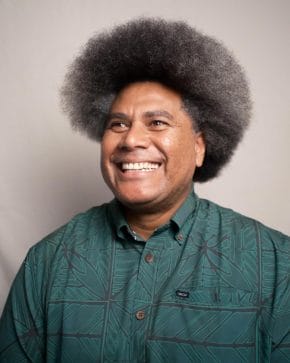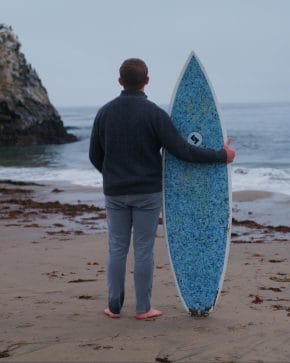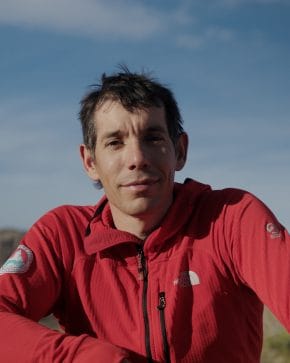While the world is busy going vegan, microbiologist Aviaja Lyberth Hauptmann insists that a plant-based diet is not the right choice for everyone – at least not in Greenland. She wants us to stop shaming meat eaters and develop a more nuanced view of Arctic food culture.
Trout, freshly caught and cooked in seawater in a big pot over an open fire. When it’s ready, the content of the pot is poured straight onto the rocks on the beach. Children and adults gather around, and eat the fish with their fingers.
Aviaja Lyberth Hauptmann smiles while she dreamily describes her favorite food.
The 33-year-old microbiologist was born and raised in Greenland. Every summer her large family would go on hunting trips together, where evenings were spent eating dinner outdoors. “It didn’t matter if it rained or was cold,” Hauptmann recalls. “Sitting there on the beach, sharing good food and good stories, always made you all warm inside.” As a child, she never reflected on the meaning of that menu, but today it’s become something of a professional obsession. “Greenland,” she says, ‘’is a place where we eat directly from nature.”

Photo: Mahler Silvan
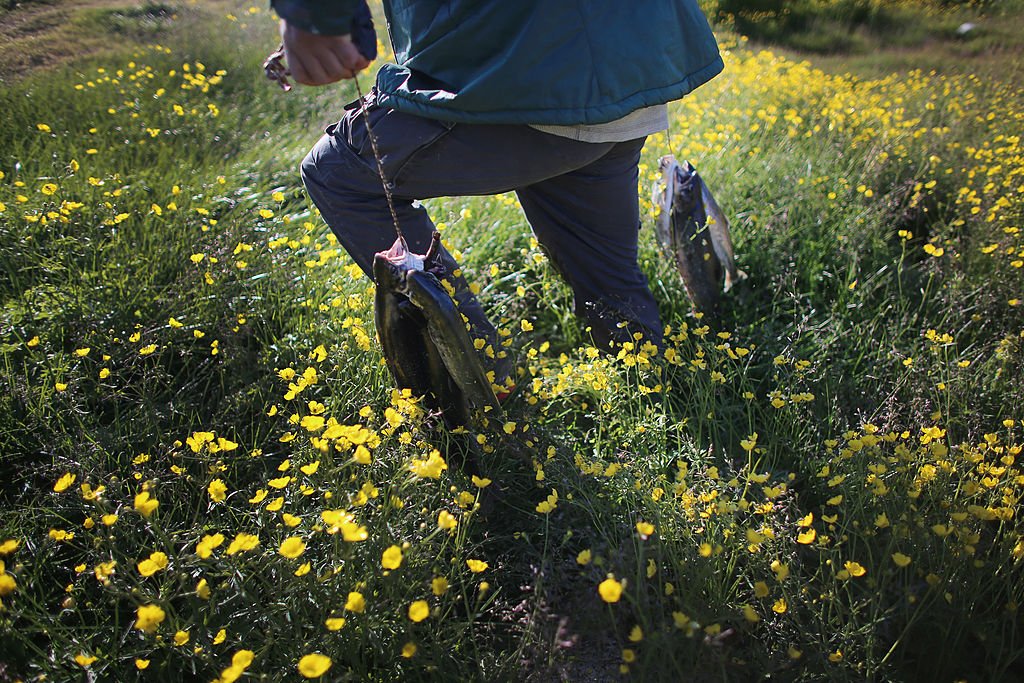
Summer in Greenland. Photo: Joe Raedle/Getty Images
Few vegetables – lots of meat
Hauptmann recently completed a postdoctoral research project on the microbiology of traditional Greenlandic food. That meant focusing on animal proteins – especially seafood and game. Although today, supermarkets in Greenland offer more Western and plant-based foods, meat still constitutes an important part of the local diet. As early as 2500 BC, when the first wave of migration brought humans across the Arctic, people in Greenland were surviving on game, birds, fish, and sea mammals, especially seals. That core diet hasn’t changed much with the ensuing centuries, and the same foods remain essential for Greenlanders, who find in them both nutrition and an important part of their cultural history. Today, health and climate experts urge the world to adopt a plant-based diet. Yet according to Hauptmann, this prescription is not appropriate for the population of Greenland. “Traditional Greenlandic food represents a strong anomaly on global diet recommendations. If you turn the food pyramid upside down, you have the Greenlandic diet – little fruit and vegetables but lots of meat,” she says.
“It isn’t just about plants versus meat but rather about nature versus industry”
Aviaja Lyberth Hauptmann
Meat shaming
To signal the break with global diet recommendations, Hauptmann calls her project the Greenland Diet Revolution. It turned out to be even more revolutionary than she initially expected. Replacing Greenlanders’ traditional game and fish-based diet with imported agricultural products is neither sustainable nor healthier, Hauptmann argues.
“If the Inuit have survived in some of the world’s harshest conditions, it’s because their animal-sourced diet is healthy for them. We just need to understand how. One of the key things we’ve found is that the Inuit would have been able to get healthy byproducts from plant-digestion without having to eat plants. This is important because with few edible plants available they would not have had the necessary gut microbes to help them digest plants. Instead they used to eat the stomach contents of herbivores, where healthy, plant-derived byproducts such as short-chain fatty acids would have been plenty,” Hauptmann explains.
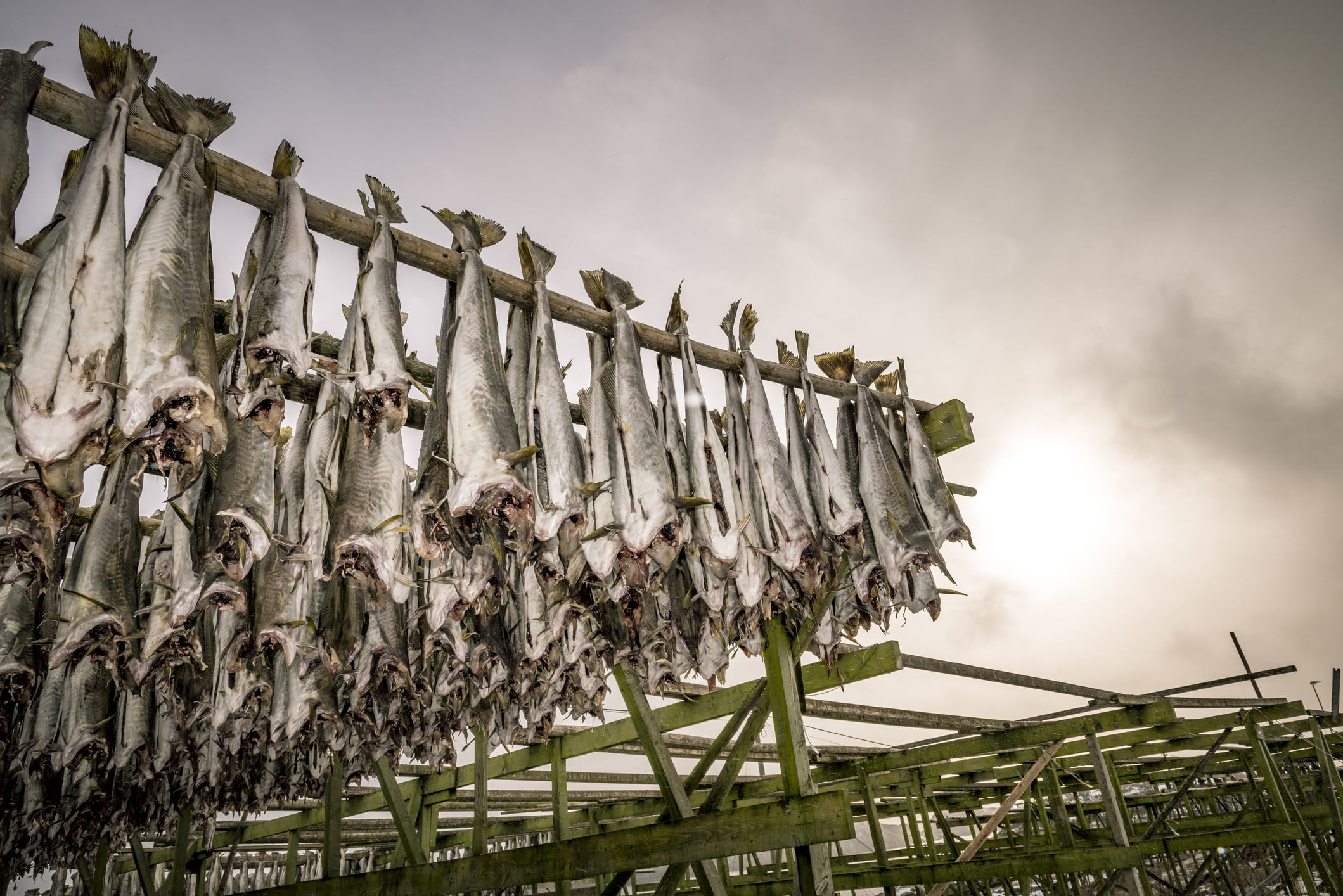
She also discovered that Greenlandic foods found in nature and prepared artisanally have a higher diversity of microorganisms than their industrially produced counterparts. “I firmly believe that there is important knowledge to gain from the original Greenlandic diet which can help us all understand what makes foods healthy. Greenland is an extreme case. It isn’t just about plants versus meat but rather about nature versus industry,” Hauptmann says.
“Traditional Greenlandic food represents a strong anomaly on global diet recommendations. If you turn the food pyramid upside down, you have the Greenlandic diet”
Aviaja Lyberth Hauptmann
“Unfortunately there is a lot of pushing for industrial plant-based foods even in the Arctic,” she adds. “And with all the meat shaming going on, we are slowly losing knowledge about our traditional foods, which are an important source of our identity as Inuit. We need a more nuanced debate about nutrition and we need to create a space for a natural animal-sourced diet.”
Hauptmann acknowledges that for most people of the world a plant-based diet is a healthier and more sustainable solution, but she calls for a more nuanced discussion that also considers the Arctic population. “The global diet recommendations are mainly based on research on Western populations who have always had plants as a substantial part of their diets. This is not true for the Inuit who only had access to very few plants. The problem is not the call for a more plant-based diet. The problem is that Western institutions speak on behalf of the entire global population.”
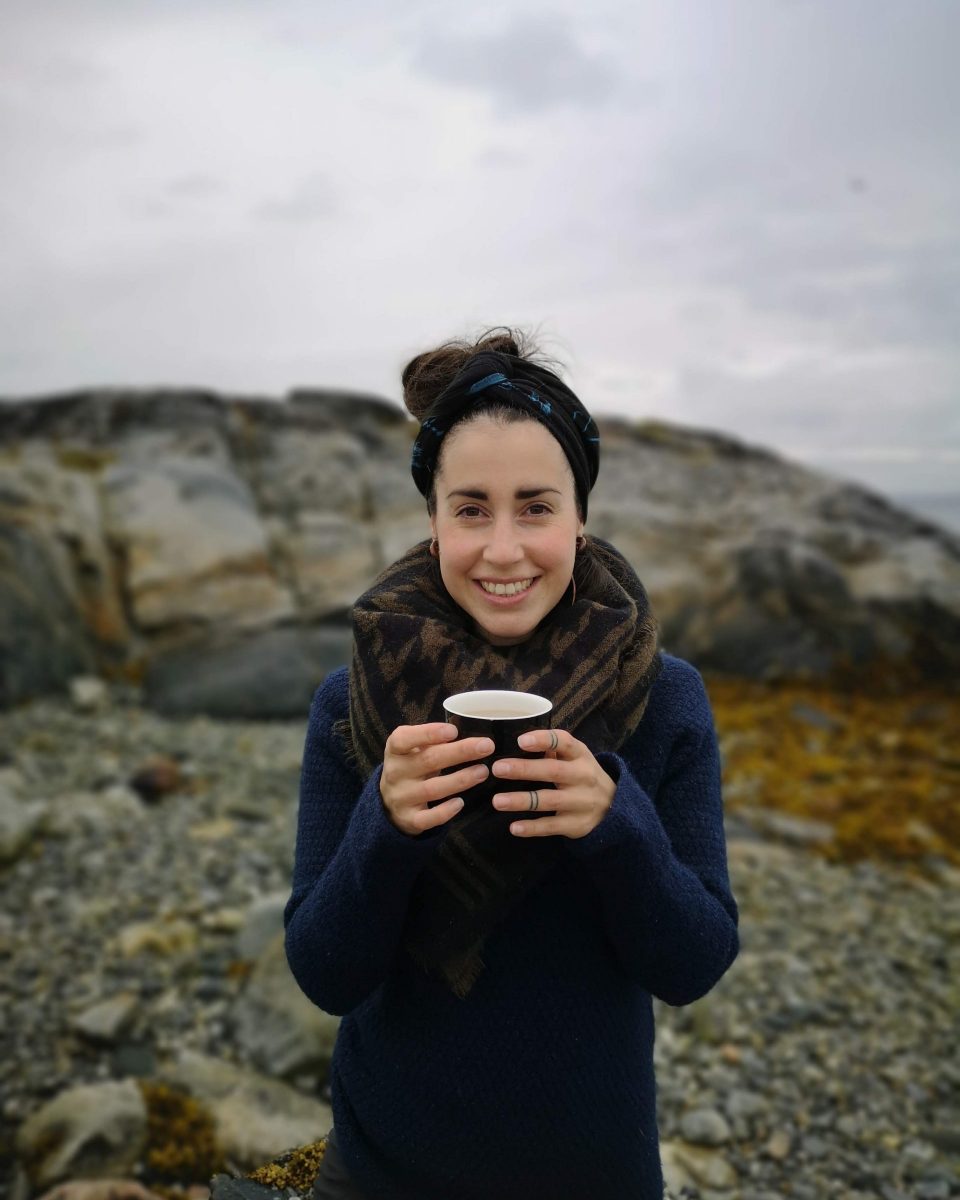
“The problem is not the call for a more plant-based diet. The problem is that Western institutions speak on behalf of the entire global population”
Aviaja Lyberth Hauptmann
$45 chicken
Today, every town in Greenland has a local fish and meat market called Kalaaliaraq (“little Greenlander”). Here local hunters and fishermen sell their daily catch. The selection follows the seasons, so depending on the time of year, you can buy fish such as cod, halibut, salmon, and redfish, and meat including seal, whale, reindeer, muskox, walrus, and the occasional polar bear.
Hauptmann and her husband often shop for their family dinners with their two sons (age 1 and 5) in Kalaaliaraq. Two years ago, they moved to Greenland’s capital, Nuuk, after having lived several years in Copenhagen while Hauptmann completed her education as a biologist and received her Ph.D. in microbiology. “Moving from Copenhagen to Nuuk demanded a radical change in our diet,” she says. “In Greenland, we cannot afford to buy organic chicken or vegetables in the supermarket as we often would in Denmark. In Greenland, the same chicken costs maybe $45. Instead, we have become accustomed to eating local fish and reindeer meat, a thing we surely will crave when we leave Greenland.”
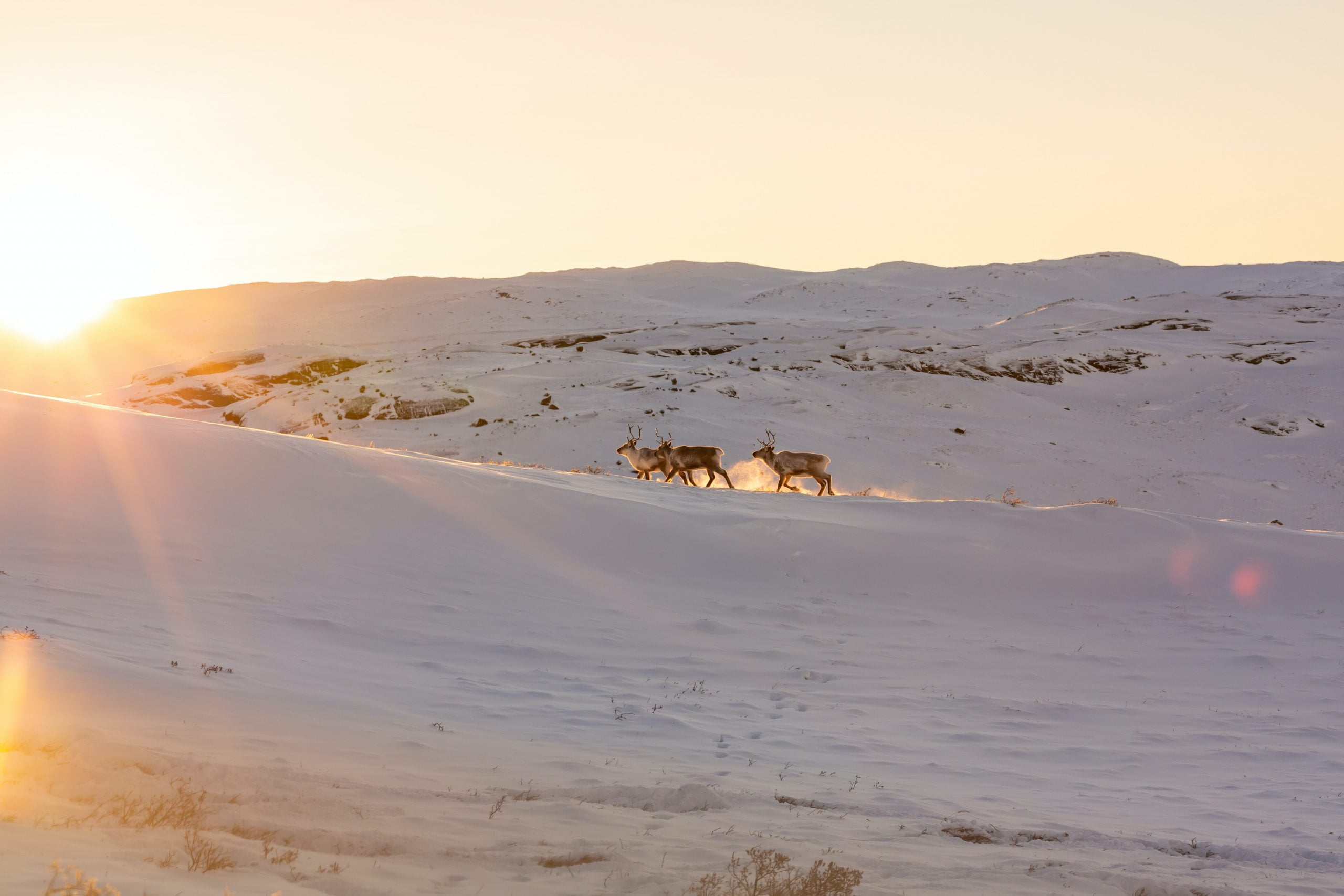
In June, they have to relocate. Aviaja has received a research grant from the Carlsberg Foundation for “The Umami project,” an investigation she will conduct at University of California. The project aims to describe the microbiology of Inuit fermented foods. The prospect of leaving Greenland saddens her, but as the only microbiologist in Greenland, it doesn’t come as a surprise. “I am at a junior level in my career – and I have to be amidst talented researchers to develop,” she says.
Playing under northern lights
Hauptmann didn’t exactly grow up on seal blubber and reindeer meat. “I think we had mainly Danish dishes for supper, like meatballs and fried pork.”
As a child of mixed lineage, with a Danish father and Greenlandic mother, Aviaja was comfortable in both cultures and is fluent in both languages. The family lived in a small town of Sisimiut (5.500 inhabitants), and as a young girl she would play outdoors with her friends. “It was fantastic. I remember that if there were northern lights, we used to find it a little scary because of the myth that the spirits of the northern lights could come and play football with your head,” she recalls. She was sad to leave when, at age 10, her family returned to Denmark.
Her nostalgia for Greenland manifests itself as a deep affinity for nature. “I have wanted to become a biologist as long as I remember,” Aviaja says. “I love nature and I love the feeling I get being in nature.”
Traditional Greenlandic children’s song
Anaana kaakkama
sarullimik panertumik
tunilanga, tunilanga,
illimi oqarputit peqqinnaqisoq.
Qaa, panertumik tunilanga
Mommy, I’m hungry
please give me some dried cod
It’s so healthy,
you say so yourself
Come on, give me some dried cod

Lake within and Arctic iceberg. Photo: Annie Spratt
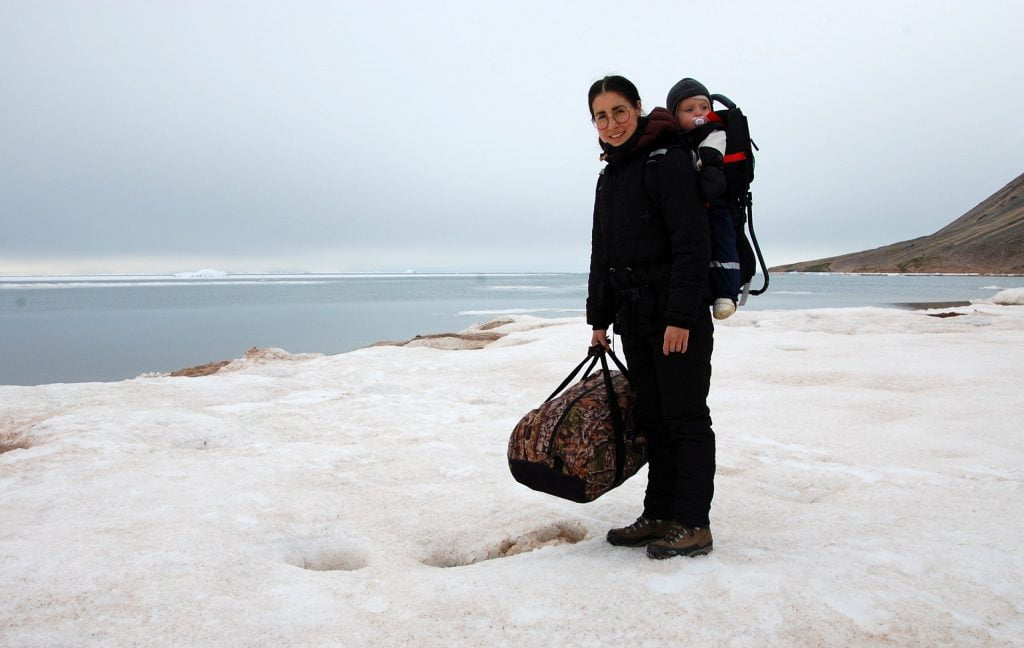
Photo: Aviaja Lyberth Hauptmann/private
With 30 kilos of meat on her back
Growing up, Aviaja dreamt of saving wild elephants and becoming the next Jane Goodall. When, at age 15, she first learned of genetic animal testing, she was horrified, but also wanted to understand it better. She borrowed a book from the library about biotechnology, and for the first time became aware of the discipline that would later become the focus of her studies at the University of Copenhagen.
After completing a Ph.D. on the genetics of microorganisms in Greenland’s snow and ice, Hauptmann wanted to focus her studies on something with social relevance. The postdoc project on Greenlandic traditional food had the added advantage of bringing her back to Greenland and back to nature. “In the summer of 2017 I travelled with my son and my mother to our family’s traditional hunting camp. While my mother took care of my son, Augo, I went muskox hunting with my uncle and cousins. We walked 15 kilometers, shot two animals, and then walked another 15 kilometers back. Each of us carried half a muskox – which weighed about 30 kilos – on our back. It was insane. But I had to prove that I was not just another qallunaaq (Dane, ed.). When we got back to the camp, I was in tears and my legs were shaking. But my sense of accomplishment was as great as when I completed my Ph.D.”
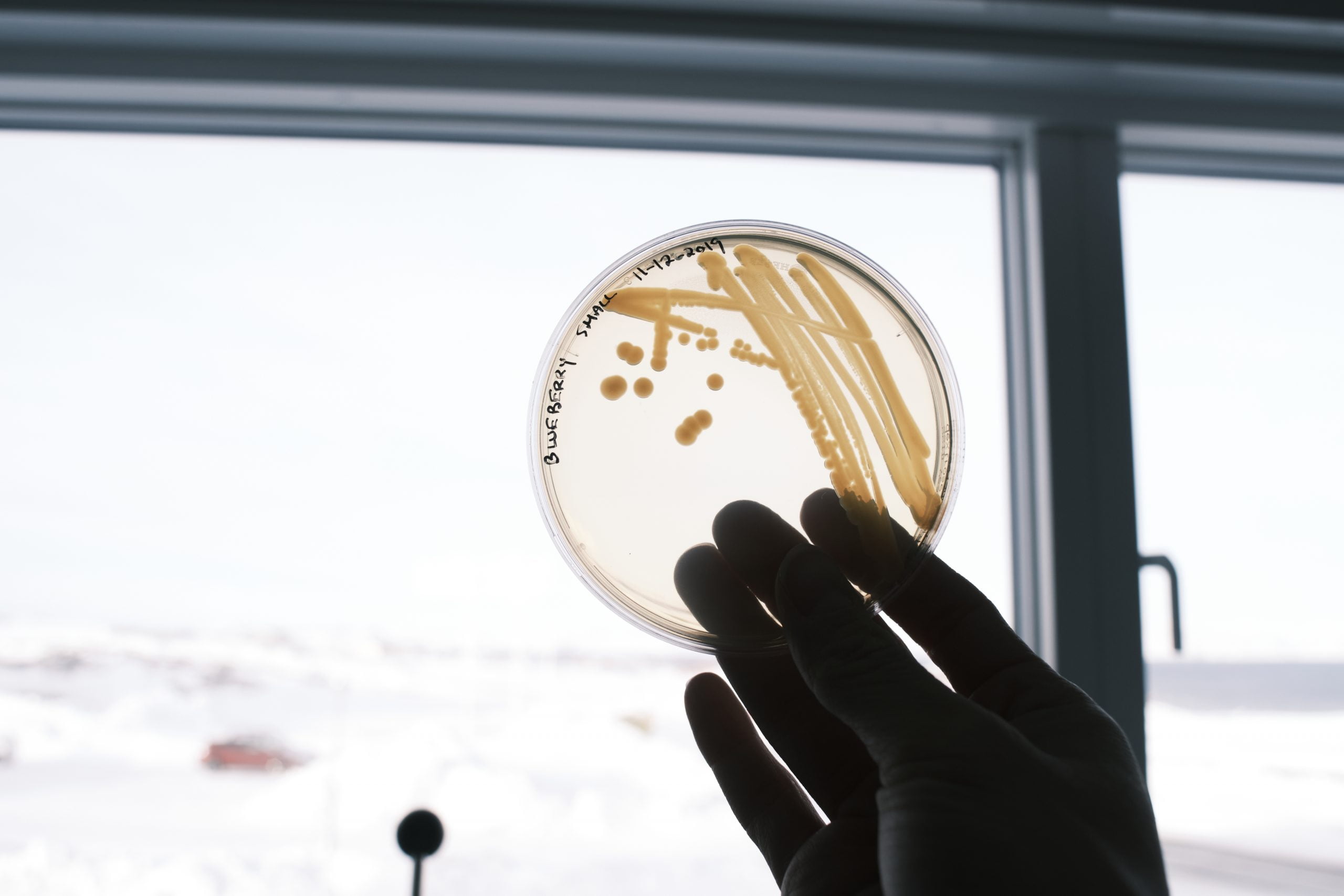
Anger and understanding
Fitting in to Inuit culture has been an important part of Aviaja’s work. Doing fieldwork in Greenland’s most northern settlement, Siorarpaluk, she experienced how locals greeted her with a great deal of skepticism. She wanted to study kiviaq, an indigenous dish made from fermented seabirds, that the Inuit in the most northern parts of Greenland consider a delicacy. Outsiders, however, have branded it ‘’the world’s most disgusting food’’, and the media has attributed several deaths from botulism to its consumption. So residents responded to news of her work protectively and, in some cases, angrily.
When they saw that Hauptmann didn’t intend to judge or warn them about eating kiviaq, locals eventually welcomed her warmly, and showed her how to prepare the dish. “In my research, I try to meet people and to acknowledge them and their lifelong relation to what they eat. They are the experts and I need their help. I think far too few scientists acknowledge this. But doing that as a scientist, you create a personal relation that may last a lifetime. You become more responsible for the implications of your research.”
“In my research, I try to meet people and to acknowledge them and their lifelong relation to what they eat. They are the experts and I need their help”
Aviaja Lyberth Hauptmann. Photo: The Asahi Shimbun Premium via Getty Images
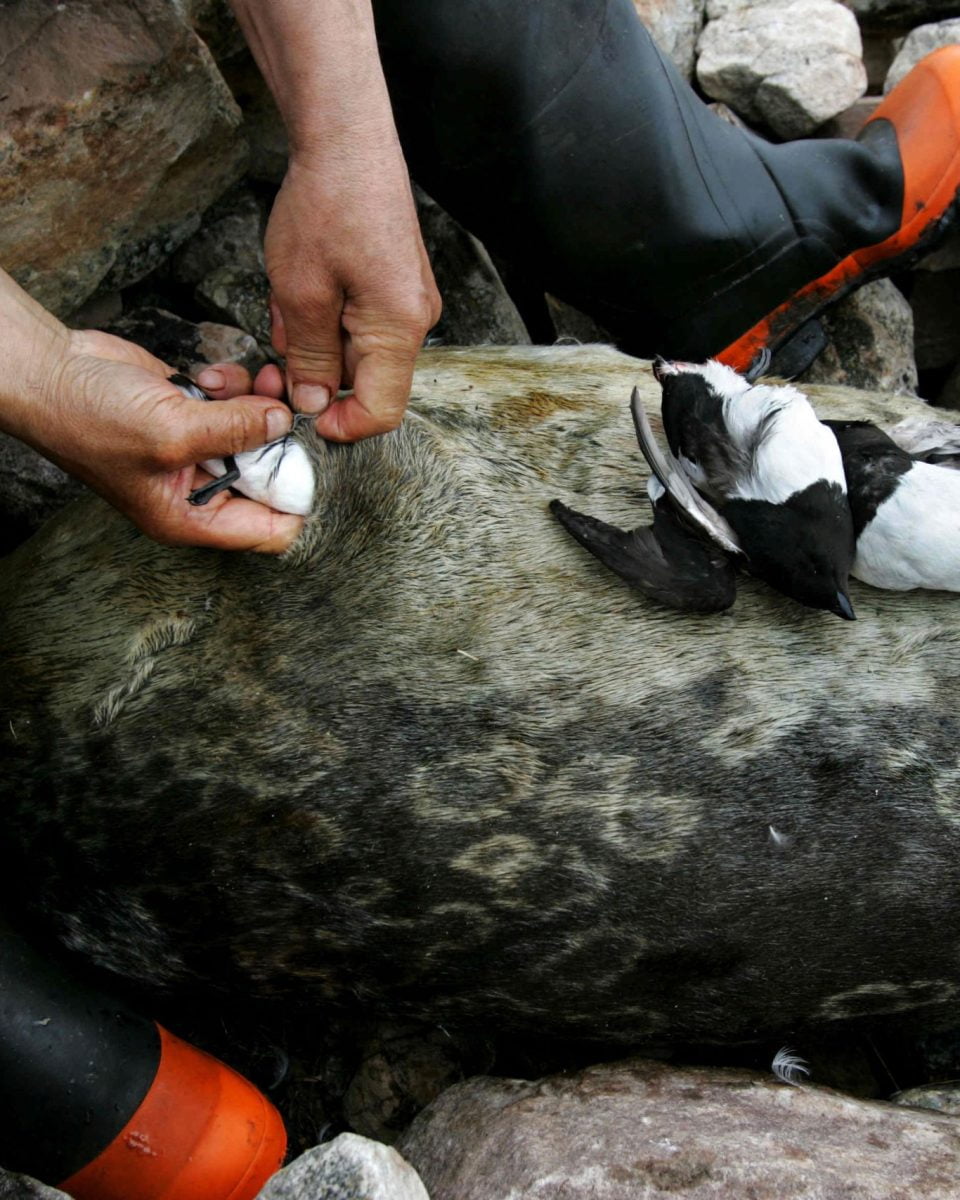
To make kiviaq, she learned, around 30 whole birds (with feathers, intestines, and all) are sewn into a sealskin, then left to ferment under a pile of rocks for at least three months. When they’re finally removed, the birds are eaten raw. Aviaja not being from the north of Greenland, never tasted kiviaq before, but she has no illusions. “I don’t expect to like it, I wasn’t raised with it,” she says, “But I hope to describe the different microorganisms that give it its distinctive flavor. The locals can taste their way to the finest kiviaq – it’s like fine wine.”
Taking from nature
The trip to Siorapaluk was difficult, but turned out to be one of the greatest experiences in Aviaja’s life: “We had to empty our own toilets and fetch the water we needed. The heating came from an oven that ran on petroleum we had to get in big, heavy cans. There was no internet. Living like that makes you aware of how much we take from nature. We don’t reflect on that in Nuuk or Copenhagen, but every time we eat something or we open an app on our phone – we take from nature.”
The UMAMI project
Aviaja recently received a grant from the Carlsberg Foundation that will fund her new project The Umami project. The UMAMI project will describe the microbial community as well as preparation-methods and cultural importance of four different types of Inuit fermented foods, namely kiviaq (fermented seabirds), snow-fermented cod, dried intestines of a variety of animals and fermented eggs.
